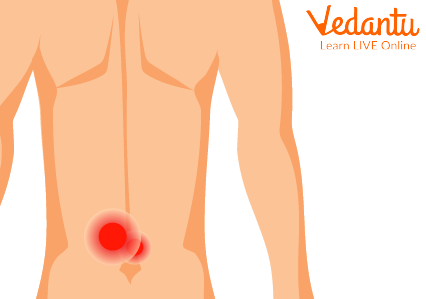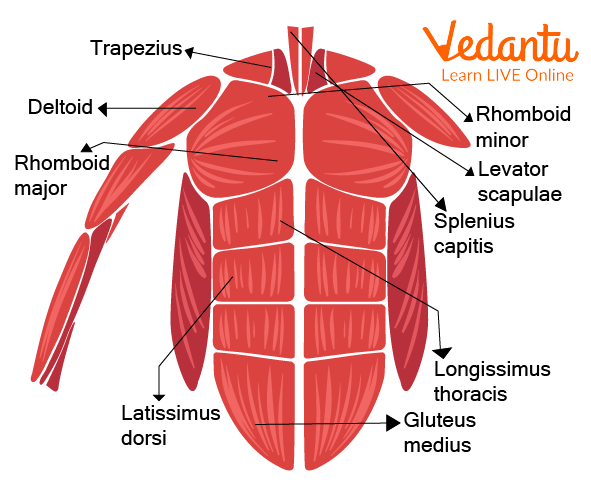




Introduction to Human Body Back
Do you ever wonder how your back muscles support such a large amount of your weight and are liable for such movements? If yes, you might know the main thing behind it is the human body's back. Your spine and trunk are supported by some muscles. You receive aid from others with breathing, standing up straight, and moving your body. Since your back muscles support such a large amount of your weight, wounds to these muscles are normal.

Back Muscles Pain
These wounds can cause low back pain. To stay away from injury and keep your back muscles healthy, you should warm up before physical activity and keep different muscles in your body strong. It is making almost half of your body weight. They work by forming layers that will work together to help us in our body movement.
Anatomy of Back Muscles
Your back muscles start under your skull, reaching across your shoulders and down to your lower back over your hips. These muscles append to your ribs, vertebra (bones in your spine), shoulder bones, and neck. In your back, there are three muscular groups. They belong to the skeletal muscle class of muscles. As a feature of your outer muscle-skeletal system, these muscles give structure to bones and other soft tissues. Many fibres make up skeletal muscles.

Back Muscles
How Do the Muscles on Your Back Look?
Muscles in the human body back belong to the skeletal muscle class of muscles. These muscles support bones and other soft tissues as part of your musculoskeletal system. Skeletal muscles are made up of numerous distinct fibres. These fibres group together to provide the impression of stripes or striae. These muscles are cylindrical, voluntary and multinucleated.
Uses of Back Muscles
The uses of back muscles are as follows:
Back muscles help us to move our body and bend the body.
They also help in rotating our trunk and standing up straight.
They also support our spine.
Some Interesting Facts About Muscles
Let's dig deeper into some of the unknown facts about Muscles:
There are about 600 muscles in the human body.
Three main types from them are skeletal, smooth and cardiac muscles.
The largest muscle in the human body is the gluteus maximus or buttock muscles.
Our back muscles are the structural support of our trunks.
These muscles assist us with moving our body, including our head, neck, shoulders, arms, and legs.
Our back muscles work to permit us to twist around, turn our heads and extend our backs. These muscles additionally help us to sit and stand upright.
Back muscles are an essential part of our body; they support our spine and assist us with breathing.
Summary
Different types of muscles protect our body parts. Back muscles make up almost half of your body weight. These muscles are under your control and allow you to move your body as you wish. The large muscles present at the top of the leg are very strong. The largest muscle in the human body is the gluteus maximus or buttock muscles.
An injury to your back muscles can cause muscle pain and firmness at any place in your back, muscle weakness, diminished mobility, restricted movement, swelling and even tenderness. Always take care during heavy exercises and weight lifting to avoid back muscle injury. We hope this article will clear all your doubts regarding the back muscles of the human body.
FAQs on Human Body Back: An Important Part of Body
1. Which conditions affect the back muscles?
Injuries influence back muscles influencing the back include:
Back Muscle Sprains: Back muscles may stretch or tear. These typical injuries occur because of lifting a heavy weight (or lifting incorrectly), exercise, overuse, or accident. Muscle cramps might result from back stress.
Pain, Tightness, and Stiffness: Chronic pain in the back is very normal. Pain can prompt stiffness and decreased mobility. (trouble moving). Tense muscles and back muscle pain can result from depression, stress, and nervousness.
2. Which one is the strongest of all back muscles?
The Latissimus Dorsi is the strongest of all back muscles.
3. How can you keep your back muscles healthy?
Work on your Flexibility: Talk to your specialist about yoga and stretches that increase flexibility in your back muscles.
Lift Weights Appropriately: To avoid any back injury, lift with your legs (not your back). Lift only that much weight which you can tolerate. You will get a back injury if you lift weights higher than your capacity. Always warm up before heavy exercise. It is mandatory to stretch before any kind of workout.
Always Have a Balanced Diet: To keep any body part healthy, you must always stay healthy. Always take a healthy diet to keep your muscles strong.









